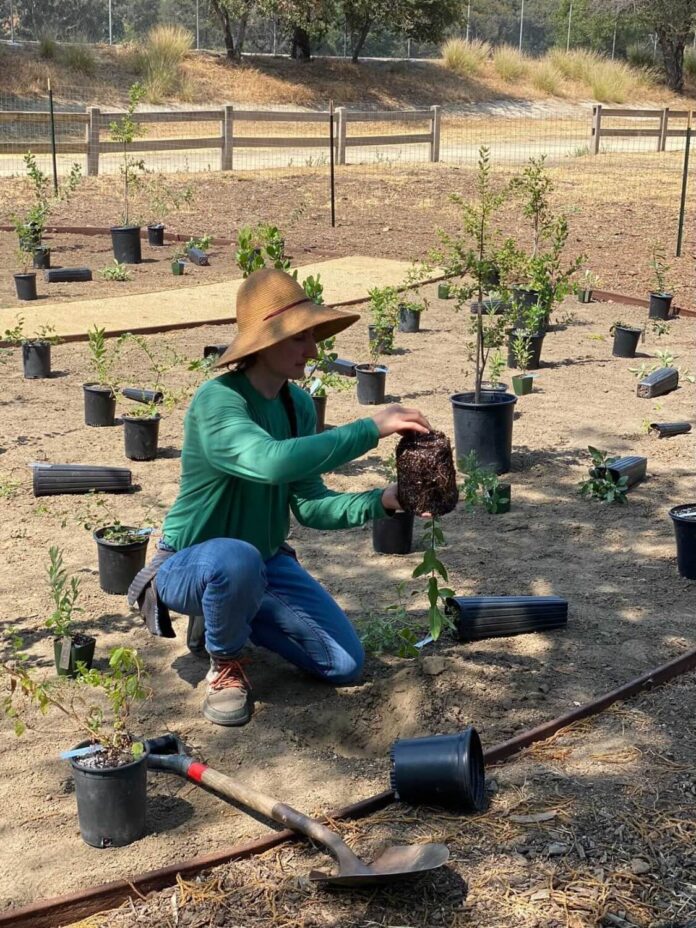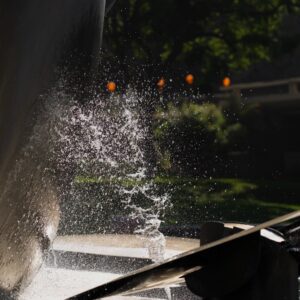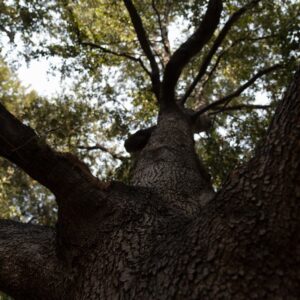
Amidst this semester’s heat wave, Occidental students received an email from Director of Facilities David Caldwell regarding the college’s plan for saving water in light of the record-breaking drought in the area. In the email, Caldwell stated that the Los Angeles Department of Water and Power imposed new water use restrictions effective June 1.
The water usage plan includes replanting the lawns in front of Thorne Hall with Bermuda Grass, which will use 30 percent less water, as well as replacing groundcover in many areas with either stone or native drought resistant plants. Occidental is looking to replace asphalt around campus with more permeable surfaces, and will also move ahead with a student-led initiative to install two 5,000-gallon rainwater capture tanks to provide water for the surrounding landscaping, according to the email.
Occidental is also looking to make domestic changes such as adding submeters to all buildings to monitor water use. Dining Services has used a more water-efficient dishwashing system since 2018, another domestic water savings, according to Caldwell’s email. Water usage has been cut down by 927,000 gallons on campus in June, by 1.2 million gallons in July and by 813,000 gallons in August.

Caldwell said in the email that Occidental is classified as a “large landscape area,” and most of the current restrictions focus on residential use. He said the college follows watering restrictions in many areas, watering only on certain days and no more than twice a week. For example, according to Caldwell, the north soccer field is no longer being watered.
“While [the restrictions that took effect on June 1] apply to Oxy, they’re mostly intended for residential housing,” Caldwell said. So while Oxy is required to meet some of those restrictions, we have some flexibility on how to try and address the restrictions.”
Caldwell said additional concerns about the social utility of plant life have come into the fold as the college makes decisions about water allocation, and usage policies vary by location across campus. According to Caldwell, Occidental’s facilities staff has been working to balance the environmental practicality and social necessity of various types of planting.
“For most places on campus, and for many of our off campus properties, when measures took effect in June, we restricted our outdoor watering. But, there are some places on campus where we decided to water outside those restrictions,” Caldwell said. “Those are mostly common park areas where members of the community tend to sit, so some grass areas and athletic fields.”
Landscaping Director Lola Trafecanty said that there are more benefits to soft scape, or planted areas, in and around campus than people may initially assume.
“In my opinion having landscaping is crucial to managing environmental heat island effects,” Trafecanty said via email. “Greenery and outdoor spaces are crucial to human calming and connecting us to nature. I cannot imagine a place with pure hardscape.”
In an attempt to aid habitat restoration, Trafecanty and her team have planted many native plants throughout Occidental’s campus.
“They [the native plants on campus] definitely require less watering, but we do supplement them for water as they are not necessarily in their native set environment, such as soil conditions, solar exposure, etc.,” Trafecanty said via email.
Trafecanty said that even while aiming to cut down on water usage, it is important to care for the local ecosystem and protect native and historical plants, such as the school’s California Oaks, which line the Academic Quad.
“We most definitely work on keeping our mature oak grove in the quad alive, and other trees throughout campus as a priority,” Trafecanty said via email. “The quad has hosted many generations of Oxy students, faculty and staff. It is a historic and iconic feature for this campus, plus oak trees are and should be protected as California natives. It takes years to grow oaks to this maturity. Other tree canopies are preserved for their longevity and shade which they provide on hot days. They add highly needed cooling on warm/hot days not just for human beings, but for our wildlife.”

Katherine Pakradouni, an LA-based horticulturist, believes microforests could be a part of a solution to the many environmental woes which LA faces. Microforests contain environments consisting of entirely self-reliant native species planted in a certain order, which promote biodiversity and provide habitats for native species.
“We’re at a place of biodiversity crisis, especially within our cities, as far as the number of native insects and animals that have been displaced by urban life,” Pakradouni said. “The concept is that you’re taking indigenous plants, and you’re planting them in a multilayered manner, and so it’s a method of habitat restoration that’s meant to give life back to all manner of species that have been displaced by urban environments, as well as to maximize carbon sequestration.”
Pakradouni said that the idea of microforests is designed to be tailored to the environment and to be adaptable to any location by relying upon native plant species. Pakradouni planted LA’s first microforest in Griffith Park in 2021. She said that although microforests can require lots of water during the initial stages of establishment, this water serves as an investment as the microforest becomes self-sustaining.
“Each microforest, regardless of where you’re planting it, is designed to be utilizing indigenous species that would be able to survive whatever climactic restraints you have. So the only time you’re using a lot of water is that first year, when you’re establishing new microforests, but afterwards, this is a climate adapted plant palette that can survive on minimal to no irrigation,” Pakradouni said.
Occidental is also taking steps to reduce its irrigation needs. For example, the recent mulching along Campus Road will allow the soil to retain moisture for longer, according to Caldwell’s email, and high-volume irrigation rotors are being replaced with drip systems.
Trafecanty said that she hopes to see further progress towards drought preparedness and efficient water usage in Occidental’s landscaping.
“I see the future of landscaping at Oxy as one that is more sensitive to the drought, has improved irrigation smart systems, and allows for outdoor spaces that can provide calming for studying, fresh air and also attract birds, butterflies, and bees,” Trafecanty said via email.
Contact Linus Oppenheimer at loppenheimer@oxy.edu.
![]()


































